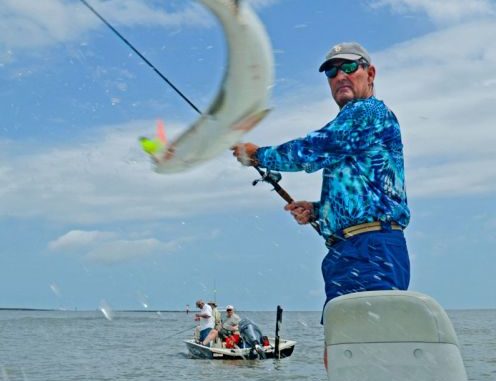
Besides catching fish, soft-plastics offer other powerful advantages in the pursuit of speckled trout and redfish.
Sexton and Vandenborre ticked off five of them in quick order:
• Using plastics does away with live bait well problems. No pumps to malfunction. No dealing with differing salinities when a well is open to outside waters. No bait dying from the live well becoming too hot or from sunscreen on anglers’ hands. Surprisingly often, someone scooping bait will pull the well’s plug and leave bait flopping with no water.
• No availability problems. Sometimes trout will only take certain-sized shrimp that might not be easy to buy. Croakers are really most available only from May to October, and in May or even June they are very small. Live bait isn’t available in some parts of the state.
• It is cheaper to fish plastics than hard plugs or live bait. If fishing isn’t being done in the rocks, 100 trout can be caught on a pack of 10 tails. Shrimp cost 25 to 50 cents each, and croakers can run 50 cents.
• Plastic is faster. An angler can cover more territory and make more casts. Going to the back of a boat to get bait from a well takes time. And with single hook plastics, unhooking time is reduced; a lot of the time trout will flip themselves off the hook.
• Plastics are more versatile than other baits. Different movements can be created by the retrieve. If an angler misses a hit, he can just drop it and another fish will pick it up. With live shrimp, the hook must be reeled in and re-baited.
